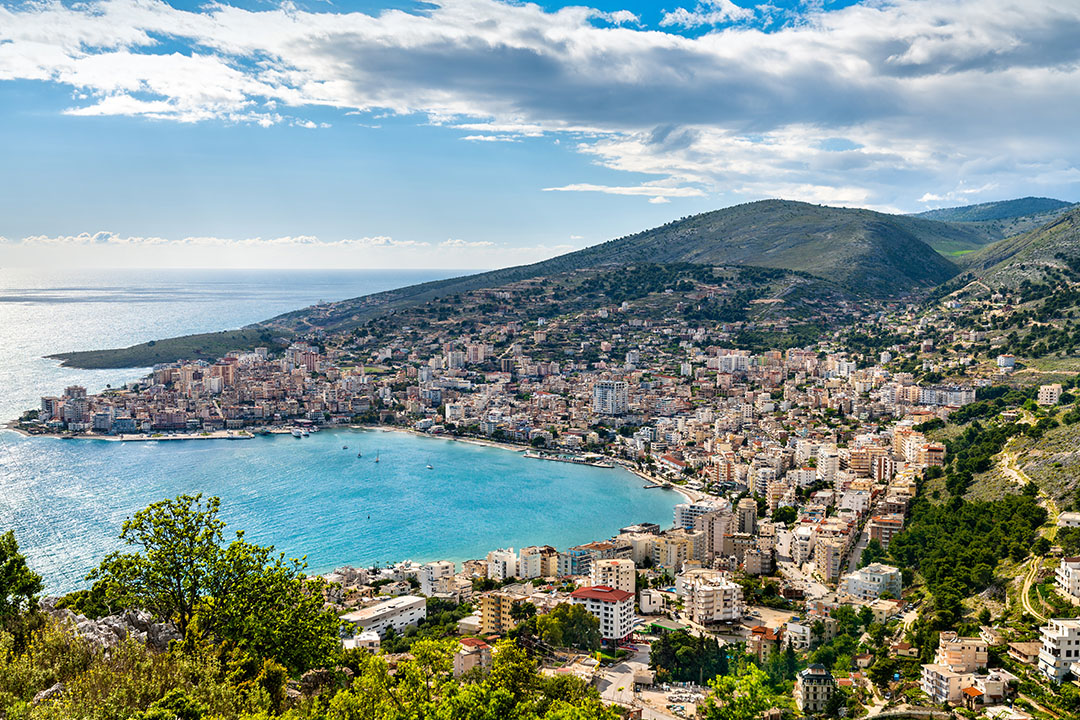However, today it is only tranquil in rural mountain regions. The infrastructure was literally adapted to the expected influx of tourists overnight. Construction is in full swing. Today, high-rise buildings are being built in 24-hour cycles, which are completed faster than building permits are issued in our country.
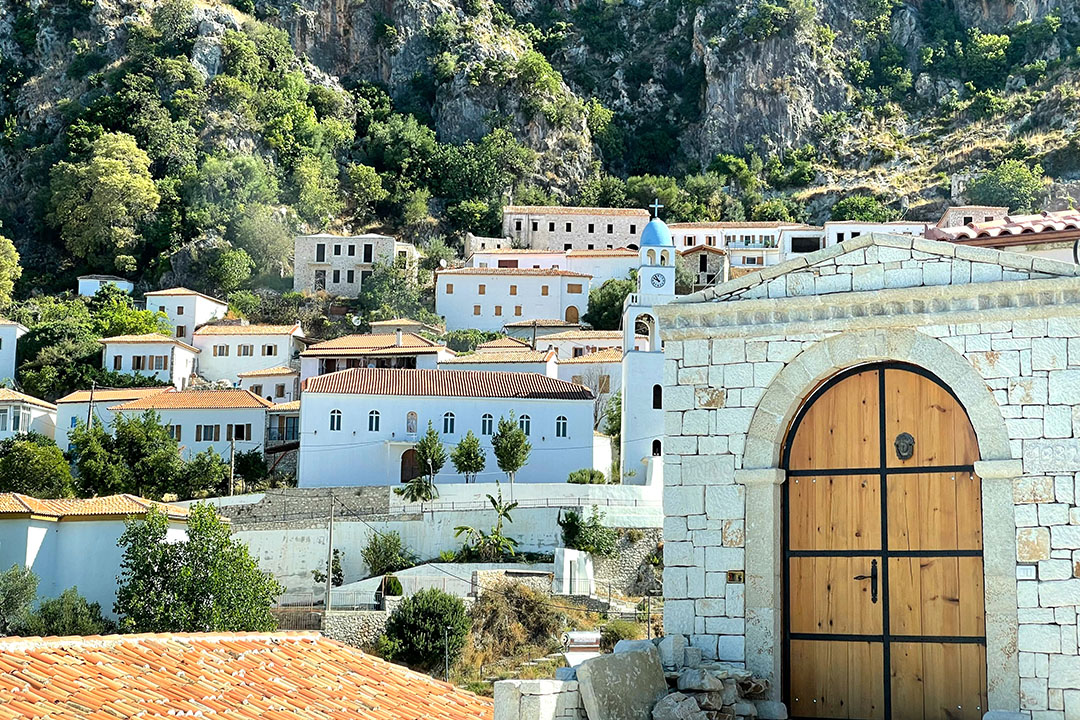
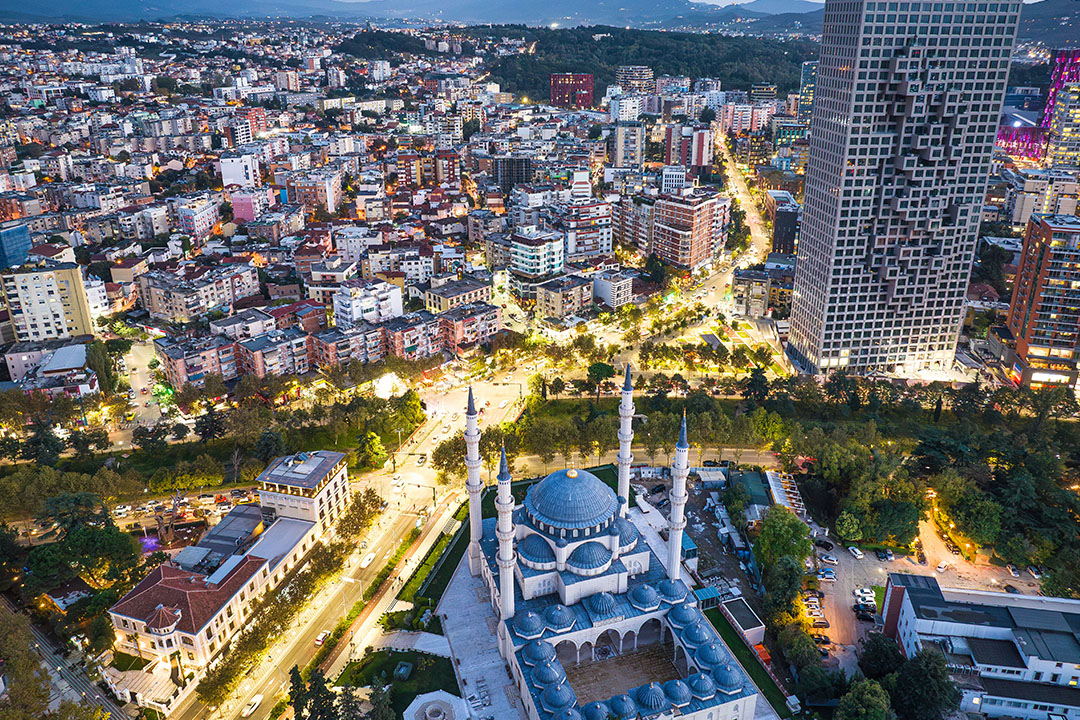
Dhërmi, on the Albanian Adriatic coast. Tourism plays a very important role in the country’s further development. A series of incentive measures have been introduced to promote tourism, for example, by reducing VAT and income tax. Four- and five-star hotels in designated regions have been given special status with favourable conditions.
It is still unclear who will live in these ‘glass palaces’ in Tirana. With an average salary of around €600, rents are unaffordable. There is a great disparity in incomes, as well as a strong desire to emigrate. The capital is an El Dorado for money laundering. Luxury cars, boulevards like Deshmoret with glass-fronted restaurants and shady Mediterranean-style front gardens demonstrate pure luxury.
The contrasting world is reflected at the roadside: farmers’ wives with sun-drenched faces, bouquets of flowers and baskets of vegetables in front of them. They smile at strangers passing by, beaming as if they were their personal guests.
Vegetables in Albania still taste like vegetables are supposed to taste. Artificial fertilisers have never found their way into private gardens, for reasons of cost alone. In Albania, you can experience how tasty spinach can be. Those who like to eat vegetarian food will be delighted.
Public buses are an excellent way to get to know the country and its people. Strangers (that changes during the journey) are very welcome. The Albanian cheerfulness is infectious. Facial expressions and gestures are indispensable. And someone is always translating.
After the Second World War, Enver Hoxha became head of the one-party communist government, which nationalised agriculture, industry, transport and banking. The Soviet Union’s invasion of Czechoslovakia later led to a break with Moscow and a rapprochement with China, which became Albania’s new patron in 1961. Like China, Albania carried out the so-called Cultural Revolution, which led to the destruction of the middle classes and religions. In 1978, the country broke with China and was completely sealed off under the dictator Enver Hoxha, which led to the country’s economic decline.
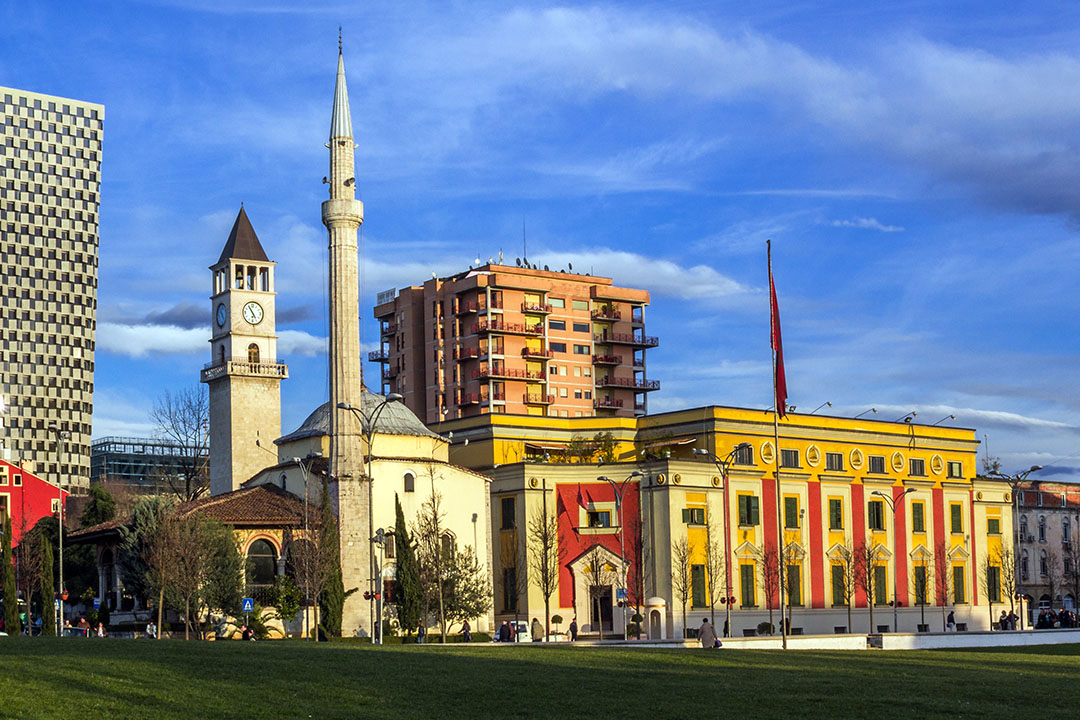
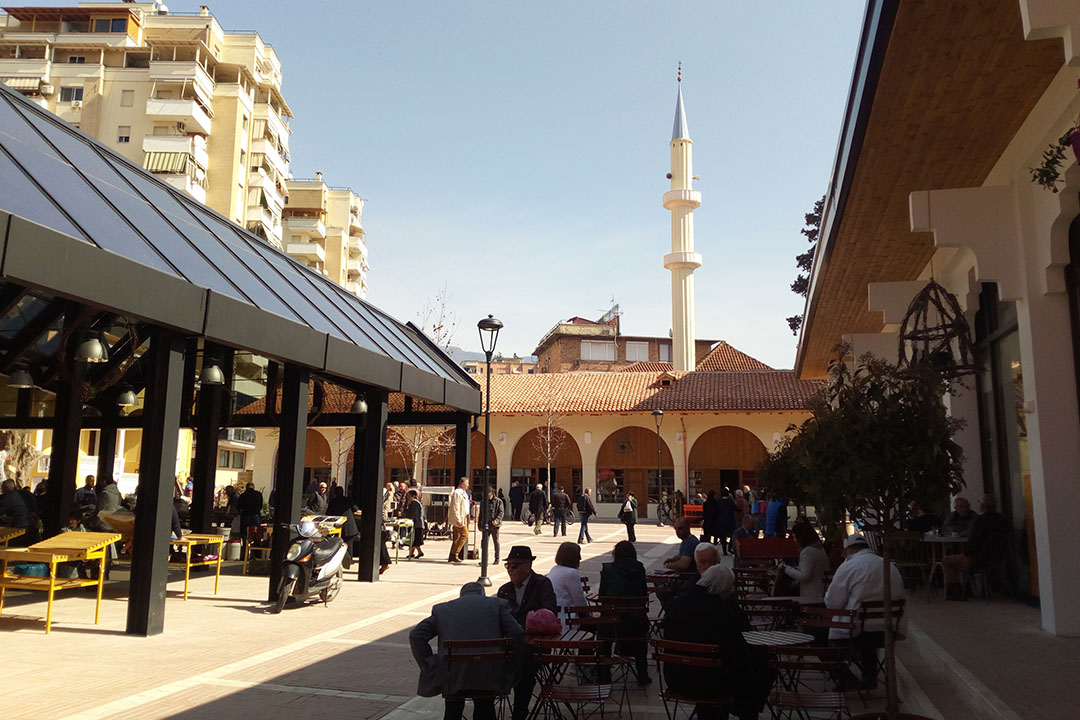
Skanderbeg Square, named after the Albanian national hero Skanderbeg. The almost 40,000-square-metre square is lined with the most important official buildings and cultural institutions. There is a colourful hustle and bustle here almost every evening. The square is the centre of the country in economic, cultural and infrastructural terms. Between 2014 and 2020, the EU provided around 700 million euros for Albania to promote democracy, good governance, the rule of law, the protection of fundamental rights, environmental and climate protection, and to improve transport infrastructure, competitiveness and education, employment and social policy.
Pazari i Ri, the New Bazaar, has a rich history dating back to the Ottoman period. At that time, it was a central marketplace in Tirana. Originally, the area was a commercial centre where traders from different regions came to sell goods such as spices, textiles and agricultural products. For centuries, the market played an important role in the local economy and social life.
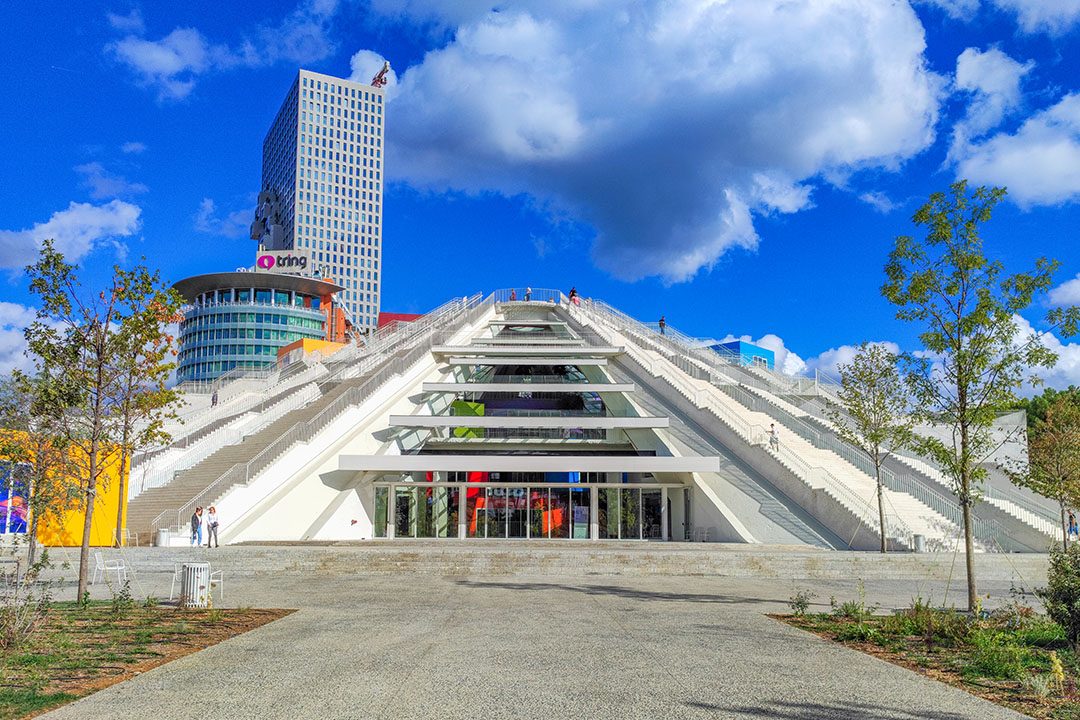

The pyramid, once a monument to the former communist dictator Hoxha, has taken on a new meaning. Colourful and futuristic, it has been transformed into a futuristic technology centre..
The last wild river, the Vjossa, rises in north-west Greece and flows 270 kilometres across Albania to the Adriatic Sea. During dry periods, its gravel beds become vast expanses. Breathtaking views can be enjoyed from the footpaths above the river. Flocks of flamingos can be seen in the evening hours. And wild animals rarely seen in our latitudes. Insects nest in the clay soil, many with names we no longer know.
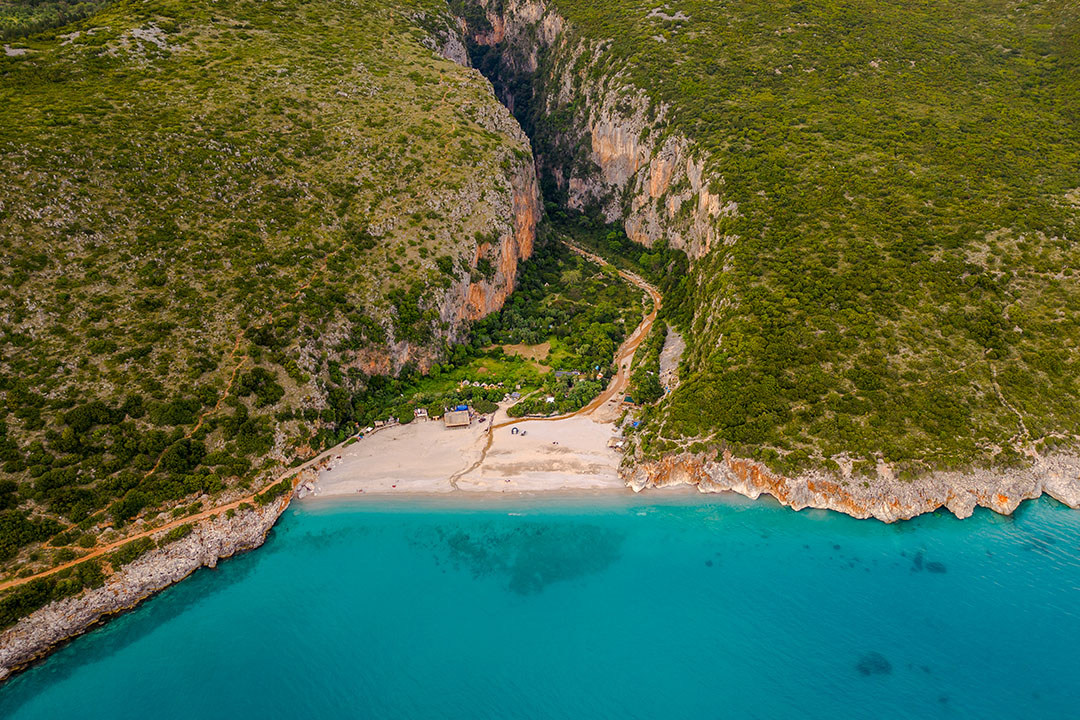
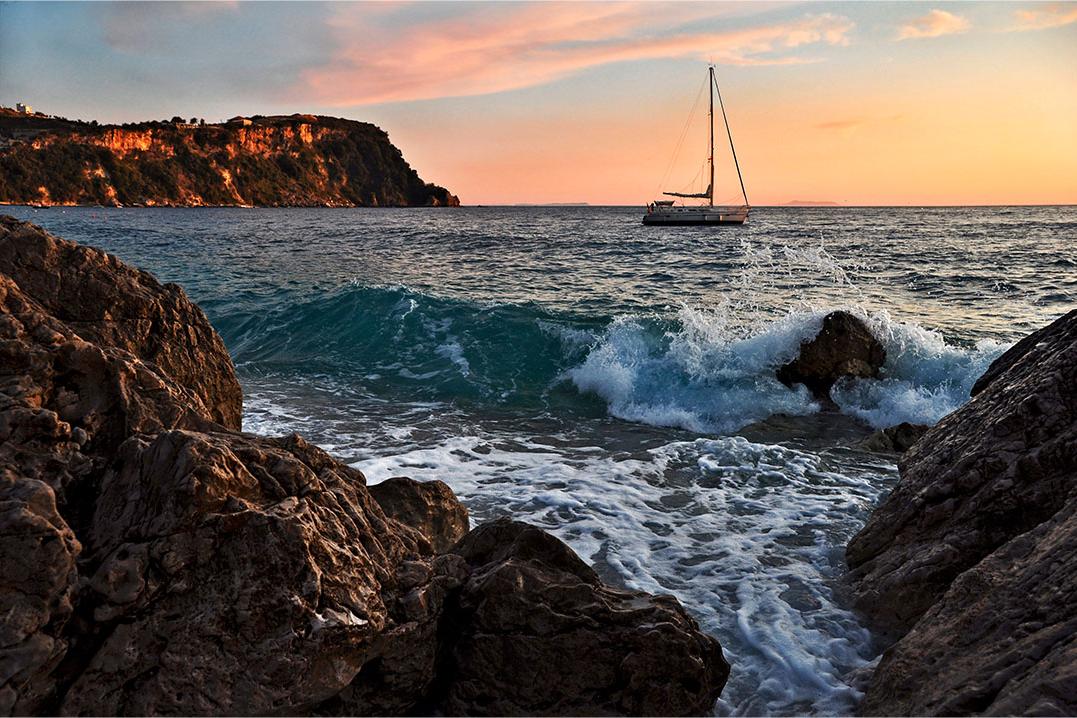
Gjipe. Besides the tourist hotspots, the Albanian coast also offers seemingly untouched nature.
Between Flor and Saranda on the Albanian Riviera, the small fishing town of Himara lies on rugged cliffs above the crystal-clear sea. It is a favourite place that feels truly Albanian in spring and autumn.
Albania is still (almost) an insider's tip, but experts are certain that the Albanian Riviera will be the next big tourist development in the Mediterranean.
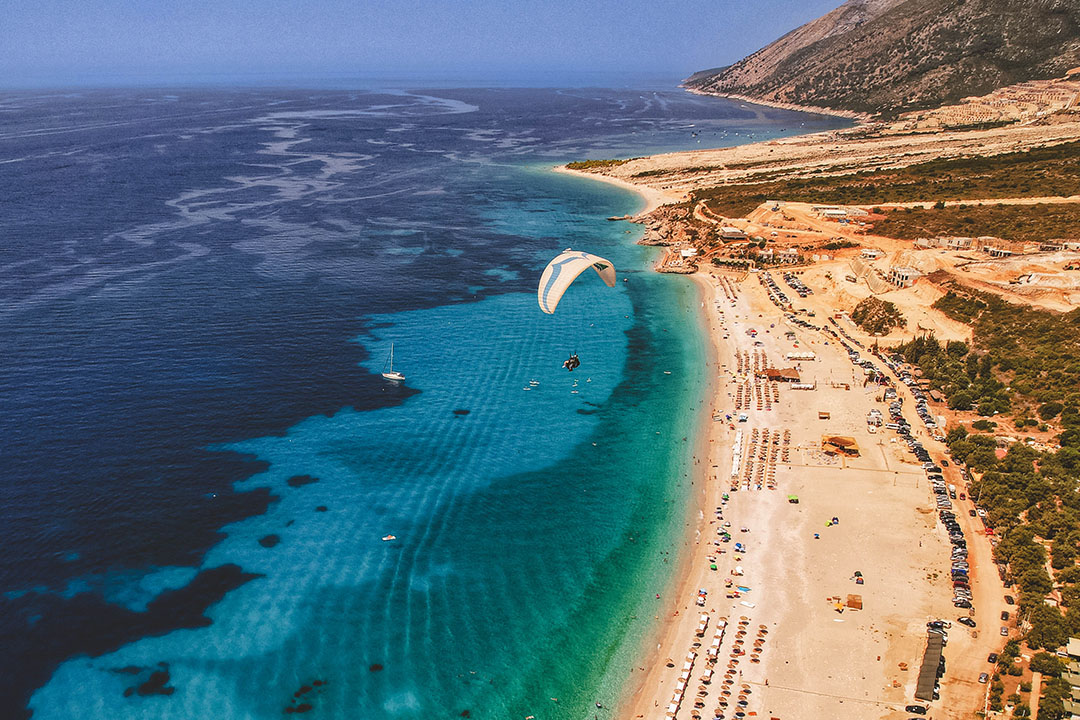
One of the largest international projects is the construction of the Trans Adriatic Pipeline (TAP), which will stretch 878 kilometres from Kipoi in Greece to San Foca in Italy.
TEXT Veronika Zickendraht, Hans Heinrich Ahlfeld und Albanian Advisory Group
www.albanien-tourismus.de

